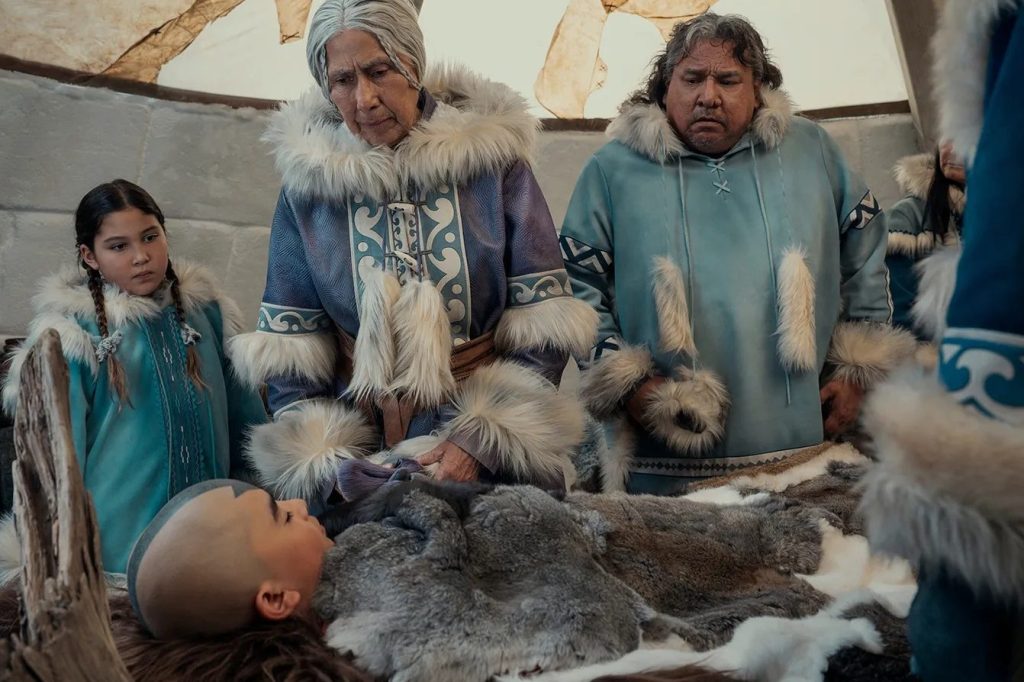Avatar: The Last Airbender is a load of tripe. And I really didn’t want it to be. There’s nothing I like more than trawling the networks for exciting new cultural phenomena from the burgeoning, weird oriental TV market — such as Squid Game and One Piece — and bringing it to your attention. Perhaps it fails because, while based on a hugely popular echt Japanese anime series, this is made by Americans. Whatever the case this much-heralded fantasy offering (no relation of the James Cameron Dances With Smurfs movies) is a turkey.
The premise is enticing. It’s set in a world divided into competing tribes — Earth, Air, Fire and Water — who cohabited in strained harmony till the aggressive Fire Nation got out of hand, wiped out most of their rivals and took control. But the goodie they failed to kill was a boy, Avatar Aang, who, after being frozen in ice for a century, has fortuitously defrosted and must now use his multitudinous element-bending skills to restore peace to the troubled land.
Unfortunately the characterization is all a bit cheesy, twee and obvious, which is not an uncommon problem with anime. Aang, for example, is so basic he makes all his rival fictive archetypes (Luke Skywalker, Neo, Harry Potter, Frodo Baggins, etc.) look positively Tolstoyian in their richness and
psychological complexity. Basically, he’s just a lovely little kid who has these incredible powers which he has somehow acquired with zero effort.
Perhaps it could have been saved with a halfway decent script or some credible performances. But it has neither. When Aang awakes to discover that his mentor, his family, his friends, his entire village, have been burned to a cinder and that all he has left is his beloved flying bison, he responds with all the emotional intensity you’d exhibit if, say, your dog had licked one of your last chocolate buttons. As for the dialogue, it’s all tell not show. One after another — in between the mostly tedious special-effects action sequences — a wooden character will stand up and deliver a speech explaining the plot.
Still, at least with the fantasy genre you get to revel in the world-building, right? Nope. No indication is given, for example, as to how the Water people in their perma-frozen, Arctic-like settlement all get to have natty, blue-dyed outfits and clean, coiffed hair. When Katara, the last “waterbender,” hops aboard the flying bison with her stern but decent elder brother Sokka to help Aang save the world, no consideration is given for their total lack of provisions, or spare clothing — or plan. Any viewer older than about four will feel that their intelligence has been insulted.
You’re much better off with House of Ninjas, which is like a Japanese mash-up of The Addams Family and The Incredibles, only with ninjas instead of monsters or superheroes. Despite the obviously derivative premise, it’s amiably, entertainingly done, with likeable, well-drawn characters and a nicely paced mix of domestic comedy, ultraviolent action scenes, romance and intrigue.
The Tawara family — Souichi (Dad), Yoko (Mum), Haru (second son and reluctant heir to the family’s ailing Sake-brewing business), Nagi (sister), Taki (grandma) — are all secret ninjas (aka shinobi) and have been for generations. They live in a rambling, picturesque old house in sore need of repair but they can’t use their very particular set of skills (stealing rare artworks from heavily protected galleries, say) to get rich, because to betray their true identity would be to risk a death sentence from the Bureau of Ninja Management.
Now, some very nasty baddies are on the loose and the Bureau needs their help. But while the women — grandma especially — seem well up for more ninja action, Dad and Haru aren’t so keen because the last mission ended with the death of Haru’s adored elder brother, Gaku. Also, Haru has unhelpfully got it into his head that killing strangers with deadly swordplay, even when they’re evil and totally deserve it, is not his thing. He’s much more interested in the pretty girl Karen he fancies in the noodle bar, even though that could get him offed by the bureau too because romance is against the rules. As also, bizarrely, is non-vegetarian food.
I had to check up on this last detail to see whether it had any historical basis. (As with gladiators, the anti-meat lobby is on a mission to claim as many ancient warriors as it can.) Apparently it’s a lie — at least according to the researcher I saw quoted. Yes, for the purposes of stealth, they did avoid pungent foods — such as garlic and other members of the allium family. They ate most other things though, including grasshoppers, snakes and frogs, which definitely don’t count as vegetables in my book.
This article was originally published in The Spectator’s UK magazine. Subscribe to the World edition here.






















Leave a Reply